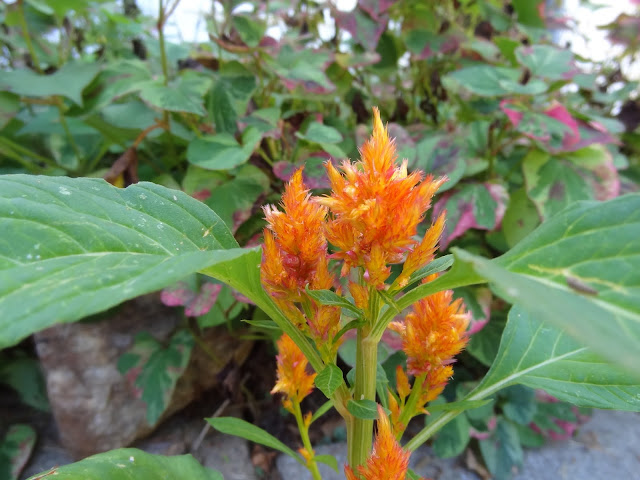Japanese Stilt Grass vs. Canadian Thistle
We have one rather large flower bed we call the thistle bed. Originally is was a bed with a couple of trees, shrubs, iris and day lilies. Then at some point in time, thistle invaded. Unfortunately, the thistle was already established when we bought the house. If you're not familiar with Canadian thistle, it is an invasive, perennial weed. Its roots can extend 17' horizontally and 20' deep and it can actually move forward several feet in one day. Also, its seeds can be viable for 20 years or more in the soil. If any part of the root is cut, two new plants will form from each piece. So you see, it has a strong will to live and it doesn't care what gets in the way.
For a few years, we worked on eradicating the thistle in the thistle bed with no luck. We then decided that we would be happy just keeping it under control. We were able to do this by pulling it several times a year. It was a prickly job that no one really liked, but a necessary one. And we kept it from a total takeover of the bed with some of the flowers surviving.
Enter Japanese Stilt Grass. This grass has been able to do in a year, what we were not able to in the 15 years before--eliminate the thistle in the thistle bed. (Well, almost. I'd say that 90% of it is gone.) However, now the stilt grass has not only taken over the the thistle bed, it is in many other spots in the yard.
Japanese stilt grass is an annual grass and native to parts of Asia. It came to this country in 1919 in a shipment from Asia and now present in most states east of the Mississippi and invasive in 15 of them. However, it seems I've only heard talk about problems with it in the last 10 years where I live in Maryland and it's only in the last year or so that we've had it in our yard.
It is causing problems in forest and hillsides because of its very shallow root system. It comes in and crowds out native plants, but then doesn't have deep enough roots to keep the hillside from eroding causing a whole new set or problems.
It spreads by rooting nodes and seeds that are viable for several years in the soil. Deer also help it spread by eating native plants giving it opportunity to invade their spaces. Apparently, deer aren't interested in eating the stilt grass. There tend to be worse invasions when white-tailed deer are around and that may be one of the problems in my yard.
Control methods include pulling, herbicides, and pre-emergent herbicides. However, it has taken over about 1/2 of our two acre lot. I think it may win this one until the next new invasive species comes along. In the meantime, I didn't think I would ever see something that would crowd out thistle. And I'm not sure that I'm as happy about it as I thought I would be. :(
Tune in tomorrow for the second part of this week's Second Look with a few more pictures from around the yard.
More details on --
Canadian Thistle:
http://extension.psu.edu/pests/weeds/weed-id/canada-thistle
Japanese Stilt Grass:
http://mdc.mo.gov/sites/default/files/resources/2010/08/9678_6624.pdf





















































